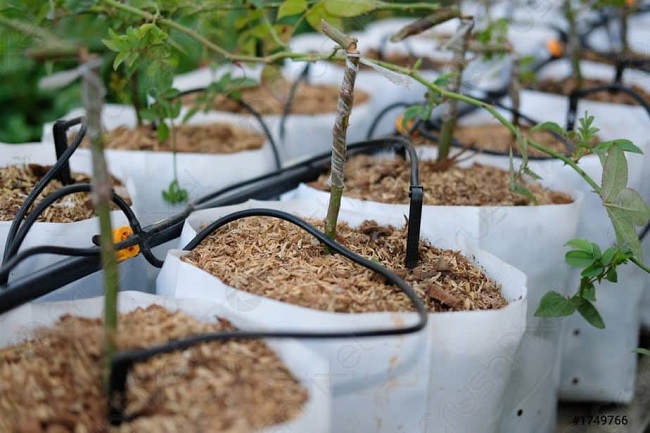
Having a large greenhouse full of plants is a wonderful thing. Few things can really measure up to seeing rows of fresh fruits and vegetables growing, watching flowers bloom, or just taking a deep breath and smelling all the leaves and soil. Still, any gardener knows that hard work goes into growing. You can’t constantly stop to smell the roses—you must fertilize, water, prune, clone, and care for the roses too.
Watering your plants can turn into a major time sink. If you’re a new grower, it’s important to understand that if you are manually watering all of your plants day after day, you’ll quickly grow tired of it. Don’t fall into this trap. Even small quantities of plants can quickly become a time sink if each plant requires daily watering. Setting up a proper irrigation system in your greenhouse can completely remove the need to manually water your plants.
There are a variety of ways to automatically water your plants, including sprinklers and misters. We’d like to highlight drip irrigation, which feeds water directly into the plant roots and minimizes water waste due to overwatering and evaporation. The goal of a drip irrigation system is to evenly disperse a supply of water throughout your greenhouse over an extended time. Compared to traditional or manual watering methods, drip irrigation can reduce water usage by up to 60%. It’s more efficient for your plants and more efficient for your pocketbook. Because water is pumped directly into a plant’s roots, the likelihood of fungal diseases or pest infections is decreased due to the lack of water on the plant leaves.
A drip irrigation system has two main components. First is the main line, which is typically polyethylene tubing. This is what draws water from your source. Second are the branch lines, which end in an emitter and directly release water into the plant’s roots. There are more components than just a polyethylene tube and some branch lines, such as automated timers that release water on a set schedule and a backflow preventer that (as its name implies) prevent water backflow from negative pressure buildup. It’s also a good idea to stake or secure the tubing—you don’t want to mess up your emitter placement if you accidentally bump into the main line.
There are two standard types of emitters: a drip emitter and a micro-sprinkler. The drip emitter drips water directly down into the root. There are different speeds, but unless you are growing in a medium that poorly retains water, a slow, steady drip is all you need. A micro-sprinkler inverts the standard concept of drip irrigation. Instead of feeding water directly into the roots, it spits water into the air, imitating a very localized rain shower. It’s perfect for tropical, humidity-loving plants.
The one downside to drip irrigation is that it can be difficult to install. There are premade kits, but if you already have a greenhouse built, it can be difficult to find something that will work with your existing setup. You can create your own drip irrigation system, but it’s time-consuming work that involves making perfect perforations in the main line. We recommend working with a professional to install drip irrigation in an existing greenhouse. The upfront cost typically pays for itself over time when you consider the water savings provided by drip irrigation. Arcadia Glasshouse is known for their high-quality residential greenhouses. If you’re looking to build, expand, or renovate a greenhouse with drip irrigation, head over to ArcadiaGlasshouse.com for more information.
Related Articles & Free Email Newsletter Sign Up
How Using Sustainable Water in the Landscape Helps You and the Environment
Why Proper Ventilation Helps Create a Healthy Greenhouse




Comment here